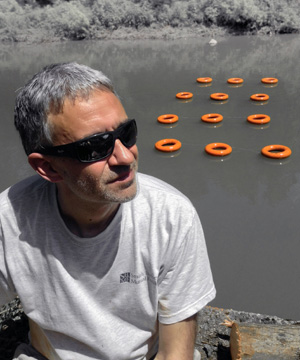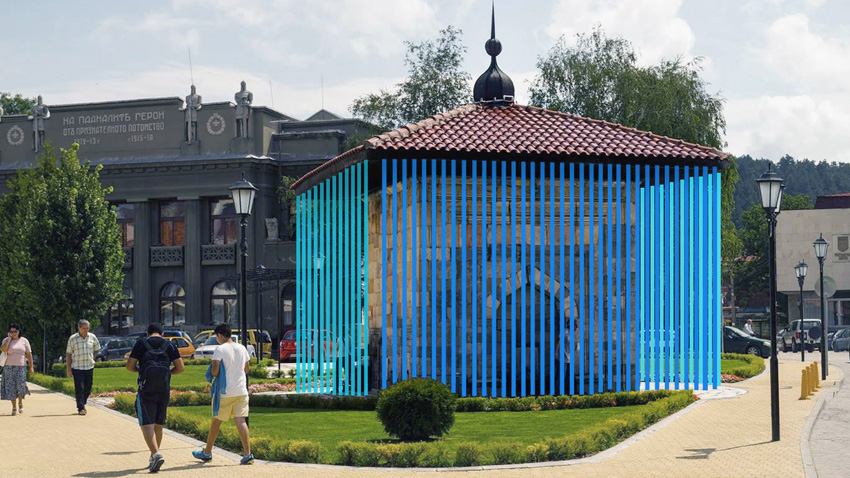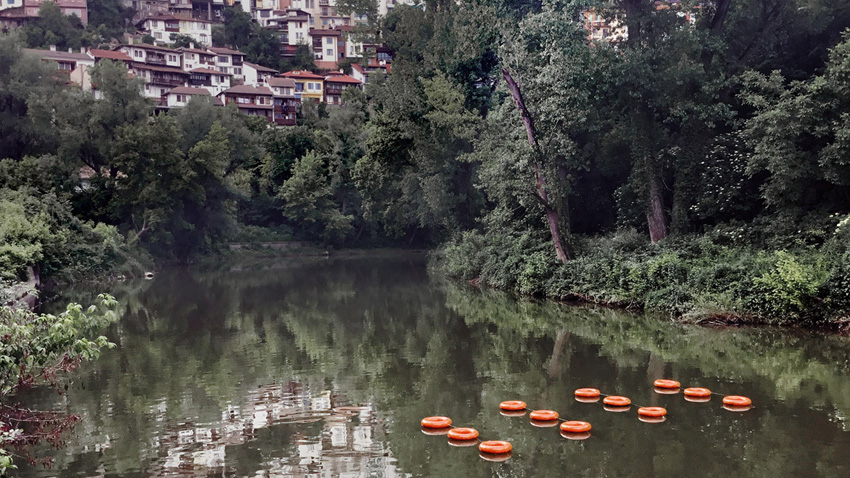His colourful walkways have become a sensation - art woven into the urban environment, which not only brings delight to people but is also educational. He lives in Madrid and works in avant-garde genres, sending messages that outlive the fleeting works.
 Hristo Gelov was part of the first wave of emigrants after the fall of the Iron Curtain, having only the experience he gained in the years spent at the Art Academy in Sofia. In Spain, where he settled, he studied graphics technologies and for twenty years was working in the world of media. But once he perfected the use of new visual technologies and expressive means of communication, he decided to return to art. And today he defines himself as a visual artist.
Hristo Gelov was part of the first wave of emigrants after the fall of the Iron Curtain, having only the experience he gained in the years spent at the Art Academy in Sofia. In Spain, where he settled, he studied graphics technologies and for twenty years was working in the world of media. But once he perfected the use of new visual technologies and expressive means of communication, he decided to return to art. And today he defines himself as a visual artist.
“Visual artist means being in direct contact with the spectators,” he says. “Traditional genres of art like sculpture and mural painting lack the same ability of reaching people. The message of the visual artist is to be read without translation, without intermediaries; it emerges in urban areas and it aims to surprise, to create a new atmosphere and then to disappear. Generally, this is a temporary artistic image with a temporary effect.”
Along with Spanish artists he has established a creative team for art actions in public spaces and for motion design. He also continually adds new video art works to his artistic collection.
“I grew up in the art world because my father (artist Nicolay Gelov) and I see how art has been looking for new forms and ways of reaching viewers. That is why art should come out in urban areas as few people visit galleries and museums with the exception of art lovers and professionals. That is what makes young contemporary artists create their works in public spaces or even in natural settings.”
An example of this is an art installation by Hristo Gelov in Samokov, where he turned an old city fountain in "House of the Water." For the purpose he used 80 blue textile strips, falling freely from the roof and being subject to the arbitrariness of the elements. I wanted to link their movement with water It is something people in a number of countries miss and I think we should appreciate water more.

Does the artist feel close to Christo, who helped hundreds of people from around the world walk on water?
“Undoubtedly, as a compatriot I feel something similar subconsciously, but I try to find my own path in art. My next projects are related to kinetics. I want people to feel the randomness of natural elements such as rain, wind and I want to somehow harness them in order to evoke emotions.”
A month before Christo created his Floating Piers in the Iseo Lake in Italy, Hristo Gelov created another water installation, also with orange-coloured elements. The place he chose to put it was the Yantra River near his home town of Veliko Tarnovo.

“I wanted people to rethink their attitude towards refugees as most of these people are not fleeing because they want it, but because they are forced to do it. So I set in the centre of the river twelve orange circles resembling twelve lifebuoys that could not reach the river banks. This way I wanted to make people think about the lives of these people and to try to walk in their shoes. This is a process that has happened before and that is why I wanted to reach people's minds through this installation,” the visual artist says.
English: Alexander Markov
From October 2 to 5, Sofia Tech Park is hosting the only international contemporary art exhibition in BulgariaSofia Art Fair 2025 – IMAGINE . The event brings together participants from 13 countries and leading figures from the world art scene,..
Sofia is the third city to host the sixth edition of the OKO International Ethnographic Film Festival , after the Ukrainian capital Kyiv and the city of Bolgrad were its hosts from September 5 to 14. The OKO film festival has a mission - to..
"A book filled with lots of humour, but also truths that can be painful" - Peter Georgiev Ray opens the curtain on his new novel "The Day My Virginity Was Taken." The premiere will take place on October 6 at Gallery Bulgari in Sofia...
Sylvia Tomova, a star of the Bulgarian stage, received her training at the Vaganova State Ballet Academy in Saint Petersburg. Her career has been closely..
Canada-based Bulgarian artists Petar Boyadzhiev and Daniela Zekina will present their joint exhibition “AlterEgo” in Chicago on November 1 . Their new..
Bulgaria participated in the international exhibition titled “EU Poetry-Verses Across Borders”, the Embassy of Bulgaria in Doha announced on Facebook...

+359 2 9336 661
